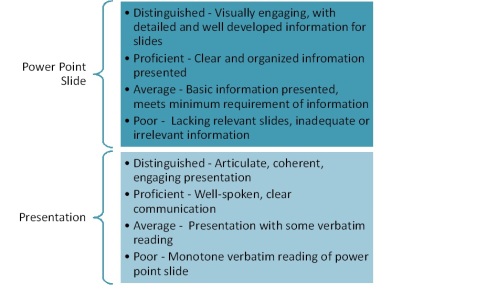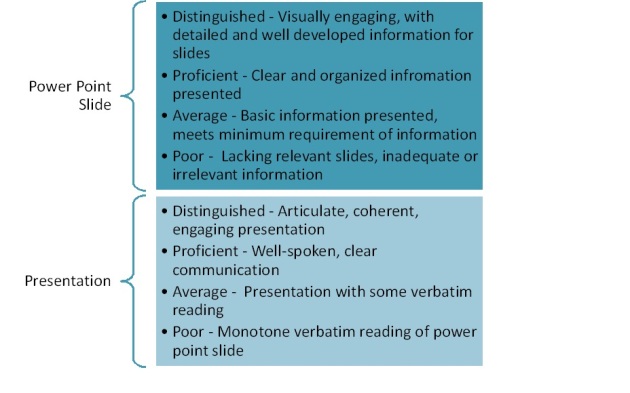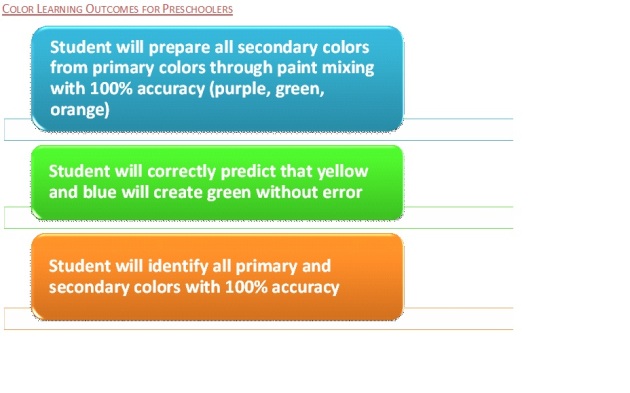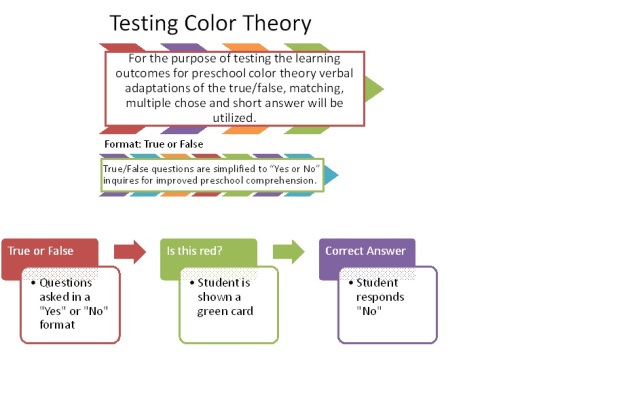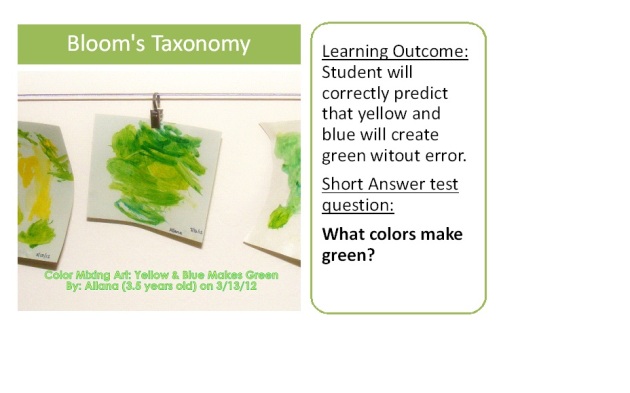Sample performance assessment for an undergraduate Child Development or Early Childhood Education course. Performance Assessment of a group project for five to seven students.
Purpose & Learning Objective
Part 1
Students will be able to demonstrate the knowledge acquired through child center site visitation regarding different early child development educational philosophies (Montessori, Waldorf, Reggio Emilia, and Bank Street) by performing a power point presentation that will compare and contrast the site observations to the scholastic research they had completed in regards to the philosophies. Student will have a comprehensive understanding of the educational philosophies which was learned via observation (site visits), research and will demonstrate acquired understanding by an oral presentation accompanied by power point presentation.
Part 2
Students will create their own mock children’s center with a written mission statement and educational philosophy to correspond to the mission statement. The objective will be to create a mock brochure for the fictitious child care center.
Assessment Context
The assessment context is the method in which the learning objective will allow students to demonstrate the knowledge or skill they have gained. It is the task or situation in which learners will be able to demonstrate the knowledge or skill they have gained.
For the above sample Part 1, the assessment context is an oral presentation that is 15 to 20 minutes in length that is accompanied by a Power Point presentation. The assessment context for Part 2 is a written mission statement and matching educational philosophy to be formatted into a sample brochure.
Holistic Rubric
Sample marking system for the oral presentation part of the fictitious performance assessment
Testing Constraints
Limits that are applied to the assessment.
- Duration – Four week project (weeks 1-2: on site observations, week 3: Power Point and presentation, week: 4 brochure due)
- References – At least two scholarly references, references must current (not be over 10 years old)
- Group work – student groups of five to seven people allowed
- Technology – Power Point program, computer resources to create brochure
